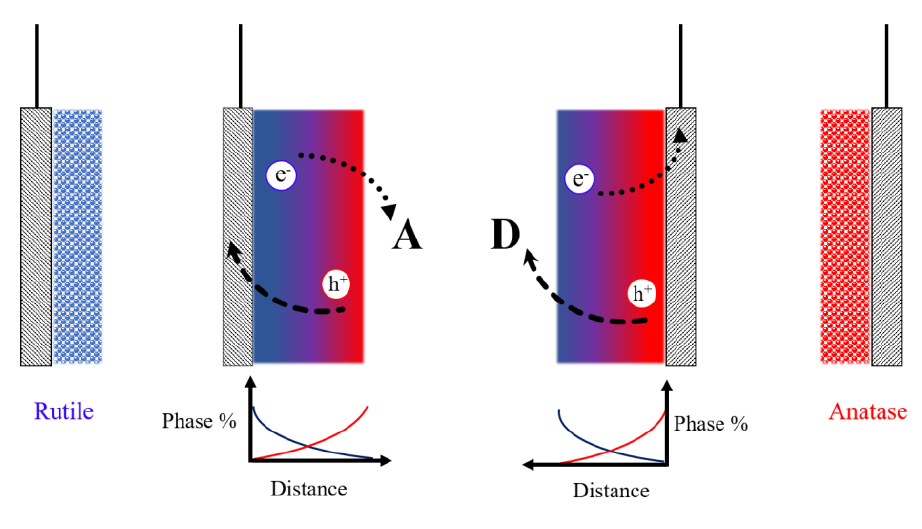Photocatalytic and photoelectrocatalytic coatings with a gradient composition
The photocatalytic and photoelectrocatalytic processes taking place on the surface of photoactive coatings are the subject of extensive research involving the conversion of solar into chemical energy. Energy is stored in the form of so-called solar fuels, i.e. hydrogen resulting from the decomposition of water or simple compounds containing one carbon atom in the molecule (e.g., CO, CH3OH, CH4), resulting from the reduction of carbon dioxide. Photocatalytic coatings are often used in the oxidation of organic pollutants in air, water and surfaces. Recently, the interest in such materials has also been associated with the possibility of using photocatalysis in the synthesis of organic compounds. In all these applications, many factors determine the efficiency of the processes, among which one of the most important is the ability to separate photoinduced charges (electrons and holes) effectively. Various approaches to increasing the efficiency of charge separation, and thus reducing the efficiency of recombination processes, include, inter alia, the construction of coatings based on ordered nanorods or nanotubes along which holes and electrons should migrate in opposite directions. This approach, despite various advantages, also has its limitations – in this way, it is possible to construct mainly coatings with submicrometric thicknesses, which offer a limited active surface (respectively to the surface of the substrate) and limited light absorption. The aim of this project is to develop photoactive coatings with a variable gradient composition that would promote better separation of photoinduced charges. Photoelectrodes with this structure should provide better performance for electrode processes (anodic or cathodic) such as water oxidation, water reduction or carbon dioxide reduction. Porous photocatalytic coatings with a variable composition across the layer should enable better separation of oxidation and reduction processes, and thus also a higher efficiency of the photocatalytic reaction.
The synthesis of coatings will be carried out using various techniques, of which the most promising seems to be wet techniques, including the liquid phase deposition (LPD) method developed by Professor Minoru Mizuhata’s group from Kobe. It is in cooperation with the Kobe group that we plan to develop this technique in order to synthesize coatings with a gradient variable composition.
The coatings will be tested for their applications in solar energy conversion processes as well as in other photocatalytic processes oriented towards oxidation reactions (e.g., pollution degradation) and reduction reactions (e.g., synthesis of organic compounds). Project outcomes will provide new insight into the design of efficient photocatalytic and photoelectrocatalytic structures.

The project is supported by National Science Centre (2022/45/B/ST5/04087)
